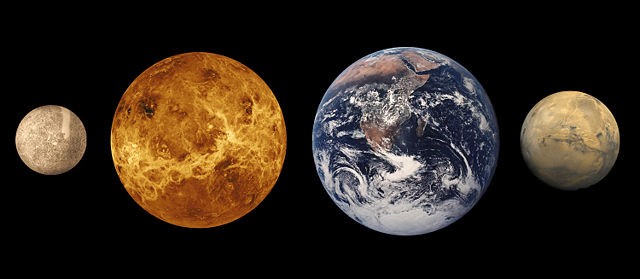Image:Terrestrial planet size comparisons.jpg
From Wikipedia, the free encyclopedia

Size of this preview: 640 × 279 pixels
Full resolution (1,500 × 653 pixels, file size: 456 KB, MIME type: image/jpeg)
File history
Click on a date/time to view the file as it appeared at that time.
| Date/Time | Dimensions | User | Comment | |
|---|---|---|---|---|
| current | 23:50, 27 December 2007 | 1,500×653 (456 KB) | Crotalus horridus | (Created identical and more compact version using the "Huffman optimized" feature of jpegcrop. Nothing else has been changed.) |
| 23:27, 14 June 2006 | 1,500×653 (488 KB) | Nicke L | ({{Information| |Description= The inner planets, from left to right: en:Mercury, en:Venus, en:Earth, and en:Mars Source: http://solarsystem.nasa.gov/multimedia/gallery/terr_sizes.jpg |Source= |Date= |Author=User [[:en:User:Brian0918|Br) |
File links
The following pages on Schools Wikipedia link to this image (list may be incomplete):
Metadata
This file contains additional information, probably added from the digital camera or scanner used to create or digitize it. If the file has been modified from its original state, some details may not fully reflect the modified file.
| Orientation | Normal |
|---|---|
| Horizontal resolution | 300 dpi |
| Vertical resolution | 300 dpi |
| Software used | Adobe Photoshop 7.0 |
| File change date and time | 14:20, 24 October 2003 |
| Colour space | sRGB |

